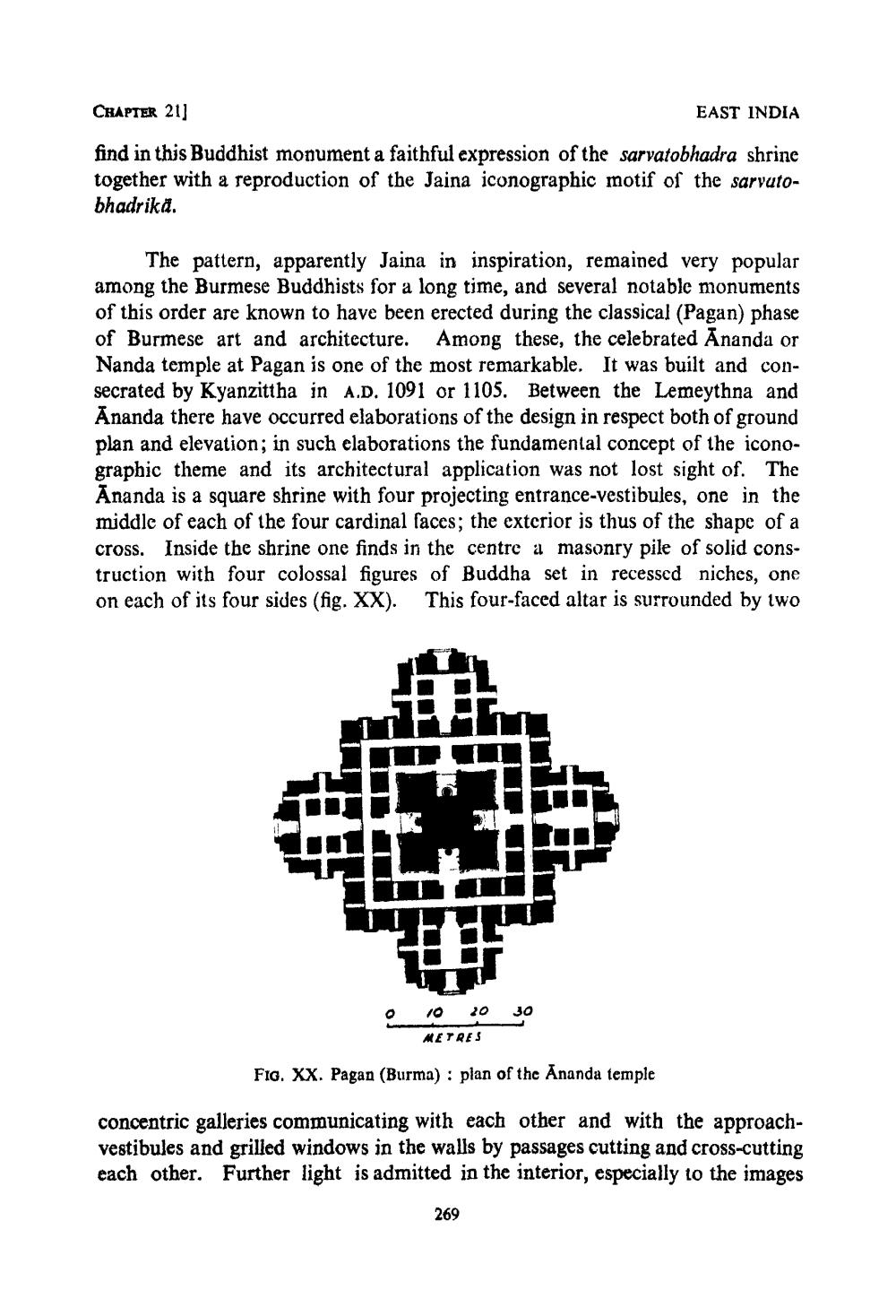________________
CHAPTER 21]
EAST INDIA
find in this Buddhist monument a faithful expression of the sarvatobhadra shrine together with a reproduction of the Jaina iconographic motif of the sarvutobhadrika.
The pattern, apparently Jaina in inspiration, remained very popular among the Burmese Buddhists for a long time, and several notable monuments of this order are known to have been erected during the classical (Pagan) phase of Burmese art and architecture. Among these, the celebrated Ananda or Nanda temple at Pagan is one of the most remarkable. It was built and consecrated by Kyanzittha in A.D. 1091 or 1105. Between the Lemeythna and Ananda there have occurred elaborations of the design in respect both of ground plan and elevation; in such elaborations the fundamental concept of the iconographic theme and its architectural application was not lost sight of. The Ananda is a square shrine with four projecting entrance-vestibules, one in the middle of each of the four cardinal faces; the exterior is thus of the shape of a cross. Inside the shrine one finds in the centre a masonry pile of solid construction with four colossal figures of Buddha set in recessed niches, one on each of its four sides (fig. XX). This four-faced altar is surrounded by two
10 20 30 METRES
FIG. XX. Pagan (Burma): plan of the Ananda temple
concentric galleries communicating with each other and with the approachvestibules and grilled windows in the walls by passages cutting and cross-cutting each other. Further light is admitted in the interior, especially to the images
O
269




